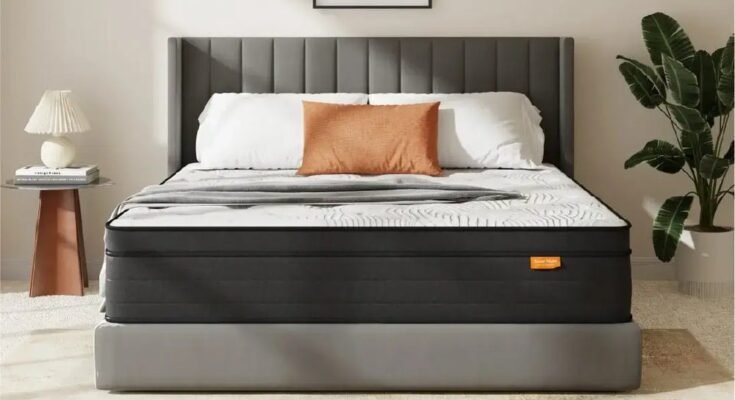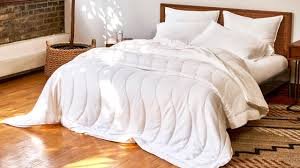A restful night’s sleep depends on more than just comfort—temperature regulation plays a crucial role in sleep quality. When your mattress traps heat, you’re likely to toss and turn throughout the night, disrupting your sleep cycles and waking up feeling unrested. This is where the right mattress becomes essential, particularly one designed to maintain a cool sleeping surface while providing lasting support.
Hybrid mattresses have emerged as a popular solution for sleepers seeking both coolness and durability. However, investing in a quality mattress raises an important question: how long will it actually last? Understanding the lifespan of a hybrid mattress helps you make an informed decision and ensures you get the best value for your investment. A mattress that maintains its cooling properties and structural integrity over time means years of comfortable, uninterrupted sleep. Beyond just staying cool, a durable hybrid mattress should resist sagging, maintain proper spinal alignment, and continue delivering the support your body needs night after night.
What is a Hybrid Mattress?
A hybrid mattress combines the best features of traditional innerspring mattresses with modern foam technology, creating a sleep surface that addresses multiple comfort needs simultaneously. At its core, a hybrid mattress features a support system of individually wrapped coils or pocketed springs that provide responsive support and enhanced airflow. This coil base is then topped with multiple layers of specialized foam materials, each serving a distinct purpose in delivering comfort and temperature regulation.
The construction typically includes three primary components working in harmony. The foundation consists of the coil support system, which creates natural channels for air circulation while providing sturdy support that prevents premature sagging. Above this sits a transition layer, often made of high-density foam that bridges the gap between the firm coil base and softer comfort layers. The top comfort layers usually incorporate advanced materials like cooling gel-infused memory foam, latex, or proprietary foam blends designed to contour to your body while dissipating heat.
What sets hybrid mattresses apart from traditional options is this strategic layering approach. The coil system maintains structural integrity and promotes breathability, while the foam layers provide pressure relief and temperature management. This combination creates a sleeping surface that responds to your body’s movements, supports proper spinal alignment, and maintains a cooler sleep environment compared to all-foam alternatives. The result is a mattress that delivers both immediate comfort and long-term durability, making it an increasingly popular choice for sleepers who refuse to compromise on either quality or longevity.
The Cooling Gel Layer
The cooling gel layer represents one of the most significant innovations in hybrid mattress technology. This top comfort layer is infused with gel particles or beads that actively work to regulate your body temperature throughout the night. Unlike traditional memory foam that tends to trap body heat, gel-infused foam absorbs and disperses thermal energy away from your body, creating a noticeably cooler sleep surface. The gel material has a higher thermal conductivity than standard foam, meaning it transfers heat more efficiently rather than allowing it to accumulate around your body.
Beyond temperature regulation, the cooling gel layer maintains the pressure-relieving properties that make memory foam so popular. It contours to your body’s curves, reducing pressure points at your shoulders, hips, and lower back without creating the “sleeping hot” sensation associated with traditional memory foam. The gel infusion also helps the foam recover its shape more quickly when you change positions, providing responsive support that adapts to your movements. This layer typically ranges from two to four inches thick, positioned directly beneath the mattress cover where it can most effectively interact with your body heat and provide immediate comfort when you lie down.
The Support Layer
The support layer forms the structural backbone of a hybrid mattress, typically consisting of individually wrapped coils or pocketed springs that work independently to respond to your body’s pressure points. These coils are engineered to provide targeted support where you need it most, with different gauge wires offering varying levels of firmness. Thicker gauge coils in the center third of the mattress often provide extra support for your heavier midsection, while slightly softer coils in the head and foot areas accommodate lighter body parts.
This layer’s primary function extends beyond simple support—it creates a foundation that resists sagging and maintains the mattress’s shape over years of use. The independent movement of pocketed coils means that when one area compresses under weight, adjacent coils remain stable, preventing the rolling-together effect common in traditional innerspring mattresses. The coil system also creates natural pathways for air circulation, allowing heat and moisture to escape from the mattress rather than becoming trapped in foam layers. This ventilation capability is crucial for maintaining coolness and preventing the growth of mold or mildew. The support layer’s durability directly impacts the mattress’s overall lifespan, as high-quality coils made from tempered steel can maintain their resilience and support characteristics for a decade or more with proper care.
The High-Density Foam Layer
The high-density foam layer serves as a crucial transition zone between the responsive coil system and the softer comfort layers above. This middle layer, typically made from polyurethane foam with a density of at least 1.8 pounds per cubic foot, prevents you from feeling the individual coils while adding durability to the overall mattress structure. The foam’s high density means it contains more material per cubic foot, making it more resistant to compression and breakdown over time compared to lower-density alternatives.
This layer plays a vital role in maintaining the mattress’s shape and preventing premature sagging, particularly in areas that bear the most weight during sleep. It acts as a buffer that distributes your body weight more evenly across the coil system, reducing stress on individual springs and extending the mattress’s functional lifespan. The high-density foam also contributes to edge support, reinforcing the mattress perimeter so you can use the entire sleep surface without feeling like you might roll off. While this layer is firmer and less conforming than the top comfort layers, its structural integrity ensures that the softer materials above maintain their intended feel and performance. Without this supportive foundation, the comfort layers would compress too deeply into the coil system, compromising both comfort and the mattress’s ability to maintain proper spinal alignment throughout its lifespan.
The Factors Affecting Hybrid Mattress Longevity
The lifespan of a hybrid mattress isn’t predetermined—it’s shaped by multiple interconnected factors that either preserve or accelerate its deterioration. While manufacturers typically estimate hybrid mattresses will last between seven to ten years, real-world longevity varies significantly based on how the mattress is used and cared for. Understanding these influencing factors helps you maximize your investment and maintain the cooling properties and support that drew you to a hybrid mattress in the first place.
The quality of materials used in construction establishes the baseline for durability, but daily interactions with your mattress determine whether it reaches its full potential lifespan. A high-quality hybrid mattress subjected to poor care may fail prematurely, while a mid-range mattress maintained properly can exceed expectations. The coil system’s gauge and tempering, the density of foam layers, and the quality of the cooling gel infusion all contribute to inherent durability. However, these manufacturing qualities only matter if complemented by appropriate usage and maintenance practices.
Environmental conditions also play a subtle yet significant role in mattress longevity. Humidity levels affect foam materials and can accelerate breakdown, while temperature extremes may compromise the cooling gel’s effectiveness over time. The foundation supporting your mattress matters too—a solid platform or proper box spring distributes weight evenly, while an inadequate base creates stress points that lead to premature sagging. Body chemistry, including natural oils and perspiration, gradually affects materials despite protective covers. The cumulative effect of these factors means two identical mattresses can have vastly different lifespans depending on their specific circumstances, making it essential to consider not just what you buy, but how you use and maintain it throughout its service life.
Usage Patterns
How frequently and intensely you use your hybrid mattress directly impacts how long it maintains its structural integrity and cooling performance. A mattress in a primary bedroom used every night experiences approximately 2,500 to 3,000 hours of compression annually, compared to a guest room mattress that might see only occasional use. This difference in usage translates to dramatically different wear rates—daily use mattresses typically show noticeable wear within six to eight years, while occasionally used mattresses can remain supportive for twelve years or more.
The number of sleepers also affects longevity significantly. A mattress supporting two adults bears roughly double the weight and experiences more movement throughout the night compared to a single sleeper, concentrating stress on materials and accelerating compression of foam layers. Couples who sleep close together create a concentrated wear pattern in the mattress center, while those who maintain distance distribute pressure more evenly. Activities beyond sleep matter too—regularly sitting on the mattress edge to put on shoes or using it as a daytime seating area creates localized compression that weakens edge support and shortens overall lifespan.
Maintenance Practices
Proper maintenance extends a hybrid mattress’s functional life by preventing uneven wear and protecting materials from premature degradation. Rotating your mattress head-to-foot every three to six months distributes body weight across different areas, preventing the development of permanent body impressions in high-pressure zones. This simple practice alone can add two to three years to your mattress’s usable life by ensuring foam layers and coils compress evenly rather than breaking down in concentrated areas.
Using a quality mattress protector shields the mattress from moisture, oils, and debris that accelerate material breakdown. Perspiration can penetrate foam layers and compromise their structural integrity while creating conditions for mold growth that damages both materials and health. Vacuuming the mattress surface monthly removes dust, dead skin cells, and allergens that accumulate in the comfort layers. Ensuring adequate bedroom ventilation allows moisture to evaporate from the mattress rather than becoming trapped, which is particularly important for maintaining the cooling gel layer’s effectiveness. Avoiding jumping or standing on the mattress prevents sudden stress that can damage coil systems and create weak points in foam layers, preserving the mattress’s ability to provide consistent support.
Individual Sleep Habits
Your body weight and sleeping position create specific pressure patterns that influence how quickly a hybrid mattress wears. Heavier individuals naturally compress foam layers and coils more deeply, accelerating material fatigue in areas bearing the most weight. A person weighing over 230 pounds may find their mattress shows significant wear after five to six years, while someone under 150 pounds might enjoy comfortable support for a decade or more from the same model. This weight-related wear isn’t a defect but rather a natural consequence of how materials respond to sustained pressure over time.
Sleeping position affects wear patterns distinctly—back sleepers distribute weight relatively evenly across the mattress surface, while side sleepers concentrate pressure at shoulders and hips, creating localized compression in these zones. Stomach sleepers place sustained pressure on the mattress center, potentially causing premature sagging in this high-use area. Restless sleepers who change positions frequently throughout the night actually distribute wear more evenly than those who remain stationary, though they may stress the coil system more through repeated compression and release cycles. Body temperature also matters—naturally warm sleepers who perspire more during sleep introduce more moisture into the mattress, which can affect the longevity of foam materials and the cooling gel layer’s performance over time. Many furniture manufacturers, including SweetNight, design their hybrid mattresses with varying firmness levels to accommodate different body types and sleeping positions, which can help optimize longevity based on individual needs.
Maximizing Your Hybrid Mattress Investment
Understanding how long a hybrid mattress lasts requires looking beyond simple timeframes to consider the complex interplay of construction quality, usage patterns, and maintenance practices. While most hybrid mattresses deliver reliable performance for seven to ten years, your specific experience depends largely on how you care for and use your investment. The cooling gel layer, support system, and high-density foam work together to provide temperature regulation and comfort, but these benefits diminish without proper attention to rotation schedules, protection from moisture, and appropriate usage.
Your individual circumstances—body weight, sleeping position, and whether you share the bed—directly influence how quickly materials compress and lose their supportive qualities. By choosing a high-quality hybrid mattress with robust materials and maintaining it through regular rotation, protective covers, and mindful use, you maximize both its cooling performance and structural longevity. The investment in a hybrid mattress pays dividends in better sleep quality, but only when you actively preserve its condition. Ultimately, a hybrid mattress’s lifespan reflects not just what you buy, but how you care for it throughout years of nightly use.




